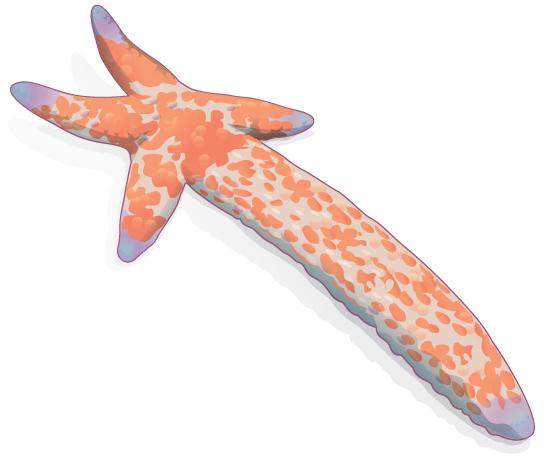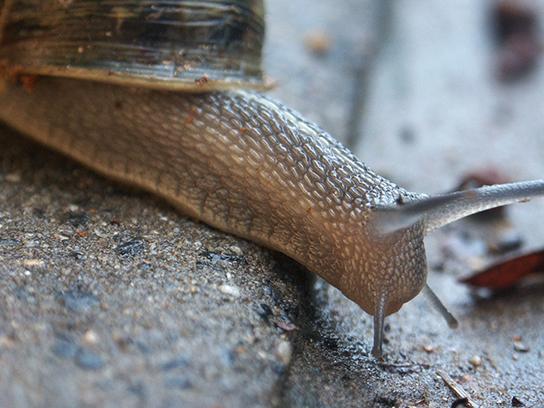Learning Objectives
Learning Objectives
In this section, you will explore the following questions:
- What are advantages and disadvantages of asexual and sexual reproduction?
- What are examples of methods of asexual reproduction among animals?
- What are examples of methods of sexual reproduction among animals?
Connection for AP® Courses
Connection for AP® Courses
Much of the information about the different reproductive systems of animals is not within the scope for AP®. You likely studied human reproduction in a health course or previous biology course. Reproduction is necessary for the survival of a species, and animals have evolved various reproductive strategies. In a previous chapter we learned that asexual reproduction via mitosis produces genetically identical organisms (clones). We also previously explored how meiosis followed by sexual reproduction produces offspring that are genetically different from their parents. Whether or not the material in this chapter is required or illustrative as part of your AP® course, you should find the concepts interesting and relevant to your lives outside the classroom.
Both asexual and sexual reproductive strategies have their advantages and disadvantages. Organisms that reproduce asexually—for example, bacteria and some eukaryotes—may be at a disadvantage in an unstable or unpredictable environment because, barring mutation, the identical offspring may not have sufficient genetic variation to survive in new or different conditions. On the other hand, the rapid rates of asexual reproduction may allow a speedy response to changing environmental conditions. Although sexual reproduction allows for greater genetic variation in offspring, organisms that reproduce sexually must maintain males and females in the population, which can limit the ability to colonize new habitats.
Information presented and the examples highlighted in the section support concepts outlined in Big Idea 3 of the AP® Biology Curriculum Framework. The AP® Learning Objectives listed in the Curriculum Framework provide a transparent foundation for the AP® Biology course, an inquiry-based laboratory experience, instructional activities, and AP® exam questions. A learning objective merges required content with one or more of the seven science practices.
| Big Idea 3 | Living systems store, retrieve, transmit and respond to information essential to life processes. |
| Enduring Understanding 3.A | Heritable information provides for continuity of life. |
| Essential Knowledge | 3.A.2 In eukaryotes, heritable information is passed to the next generation via processes that include the cell cycle and mitosis or meiosis plus fertilization. |
| Science Practice | 6.2 The student can construct explanations of phenomena based on evidence produced through scientific practices. |
| Learning Objective | 3.9 The student is able to construct an explanation, using visual representations or narratives, as to how DNA in chromosomes is transmitted to the next generation via mitosis, or meiosis followed by fertilization. |
| Essential Knowledge | 3.A.2 In eukaryotes, heritable information is passed to the next generation via processes that include the cell cycle and mitosis or meiosis plus fertilization. |
| Science Practice | 7.1 The student can connect phenomena and models across spatial and temporal scales. |
| Learning Objective | 3.10 The student is able to represent the connection between meiosis and increased genetic diversity necessary for evolution. |
Asexual Reproduction
Asexual Reproduction
Asexual reproduction occurs in prokaryotic microorganisms (bacteria) and in some eukaryotic single-celled and multi-celled organisms. There are several ways that animals reproduce asexually.
Fission
Fission, also called binary fission, occurs in prokaryotic microorganisms and in some invertebrate, multi-celled organisms. After a period of growth, an organism splits into two separate organisms. Some unicellular eukaryotic organisms undergo binary fission by mitosis. In other organisms, part of the individual separates and forms a second individual. This process occurs, for example, in many asteroid echinoderms through splitting of the central disk. Some sea anemones and some coral polyps (Figure 34.2) also reproduce through fission.
Budding
Budding is a form of asexual reproduction that results from the outgrowth of a part of a cell or body region leading to a separation from the original organism into two individuals. Budding occurs commonly in some invertebrate animals such as corals and hydras. In hydras, a bud forms that develops into an adult and breaks away from the main body, as illustrated in Figure 34.3, whereas in coral budding, the bud does not detach and multiplies as part of a new colony.
Link to Learning
Watch a video of a hydra budding.
- genetically identical to the mother
- not genetically identical to the mother
- genetically unique
- smaller in size
Fragmentation
Fragmentation is the breaking of the body into two parts with subsequent regeneration. If the animal is capable of fragmentation, and the part is big enough, a separate individual will regrow.
For example, in many sea stars, asexual reproduction is accomplished by fragmentation. Figure 34.4 illustrates a sea star for which an arm of the individual is broken off and regenerates a new sea star. Fisheries workers have been known to try to kill the sea stars eating their clam or oyster beds by cutting them in half and throwing them back into the ocean. Unfortunately for the workers, the two parts can each regenerate a new half, resulting in twice as many sea stars to prey upon the oysters and clams. Fragmentation also occurs in annelid worms, turbellarians, and poriferans.
Note that in fragmentation, there is generally a noticeable difference in the size of the individuals, whereas in fission, two individuals of approximately the same size are formed.
Parthenogenesis
Parthenogenesis is a form of asexual reproduction where an egg develops into a complete individual without being fertilized. The resulting offspring can be either haploid or diploid, depending on the process and the species. Parthenogenesis occurs in invertebrates such as water flees, rotifers, aphids, stick insects, some ants, wasps, and bees. Bees use parthenogenesis to produce haploid males (drones) and diploid females (workers). If an egg is fertilized, a queen is produced. The queen bee controls the reproduction of the hive bees to regulate the type of bee produced.
Some vertebrate animals—such as certain reptiles, amphibians, and fish—also reproduce through parthenogenesis. Although more common in plants, parthenogenesis has been observed in animal species that were segregated by sex in terrestrial or marine zoos. Two female Komodo dragons, a hammerhead shark, and a blacktop shark have produced parthenogenic young when the females have been isolated from males.
Sexual Reproduction
Sexual Reproduction
Sexual reproduction is the combination of (usually haploid) reproductive cells from two individuals to form a third (usually diploid) unique offspring. Sexual reproduction produces offspring with novel combinations of genes. This can be an adaptive advantage in unstable or unpredictable environments. As humans, we are used to thinking of animals as having two separate sexes—male and female—determined at conception. However, in the animal kingdom, there are many variations on this theme.
Science Practice Connection for AP® Courses
AP® Biology Investigative Labs: Inquiry-Based, Investigation 7: Cell Division: Mitosis and Meiosis. Design and conduct a series of experiments to investigate how eukaryotic cells divide to produce genetically identical cells or to produce gametes with half the normal DNA.
Think About It
Why is sexual reproduction useful if two separate cells must be combined to form a third?
Hermaphroditism
Hermaphroditism occurs in animals where one individual has both male and female reproductive parts. Invertebrates such as earthworms, slugs, tapeworms and snails, shown in Figure 34.5, are often hermaphroditic. Hermaphrodites may self-fertilize or they may with another of their species, in which case the individuals fertilize each other and both produce offspring. Self fertilization is common in animals that have limited mobility or are not motile, such as barnacles and clams.
Sex Determination
Sex Determination
Mammalian sex determination is determined genetically by the presence of X and Y chromosomes. Individuals homozygous for X (XX) are female and heterozygous individuals (XY) are male. The presence of a Y chromosome causes the development of male characteristics and its absence results in female characteristics. The XY system is also found in some insects and plants.
Avian sex determination is dependent on the presence of Z and W chromosomes. Homozygous for Z (ZZ) results in a male and heterozygous (ZW) results in a female. The W appears to be essential in determining the sex of the individual, similar to the Y chromosome in mammals. Some fish, crustaceans, insects (such as butterflies and moths), and reptiles use this system.
The sex of some species is not determined by genetics but by some aspect of the environment. Sex determination in some crocodiles and turtles, for example, is often dependent on the temperature during critical periods of egg development. This is referred to as environmental sex determination, or more specifically as temperature-dependent sex determination. In many turtles, cooler temperatures during egg incubation produce males and warm temperatures produce females. In some crocodiles, moderate temperatures produce males and both warm and cool temperatures produce females. In some species, sex is both genetic- and temperature-dependent.
Individuals of some species change their sex during their lives, alternating between male and female. If the individual is female first, it is termed protogyny or first female; if it is male first, its termed protandry or first male. Oysters, for example, are born male, grow, and become female and lay eggs; some oyster species change sex multiple times.
Everyday Connection for AP® Courses
The temperature during incubation determines the sex of loggerhead sea turtles while they develop in their eggs. If the temperature is warm enough, all will be females. If the temperature is cooler, all will be males. If the temperature is just right, called the pivotal temperature, then there will be about half females and half males.
Many species of plants, including the sunflower pictured here, are capable of self-fertilization. If pollination does not occur with the help of pollinating insects, the stigma of the flower will wrap itself around the pollen of the same flower. Although self-fertilization forms seeds by meiosis, all of the resulting plants will be identical. In other words, self-fertilization decreases genetic diversity.
- genetics
- nutrition
- temperature
- genetics and temperature
Disclaimer
This section may include links to websites that contain links to articles on unrelated topics. See the preface for more information.






